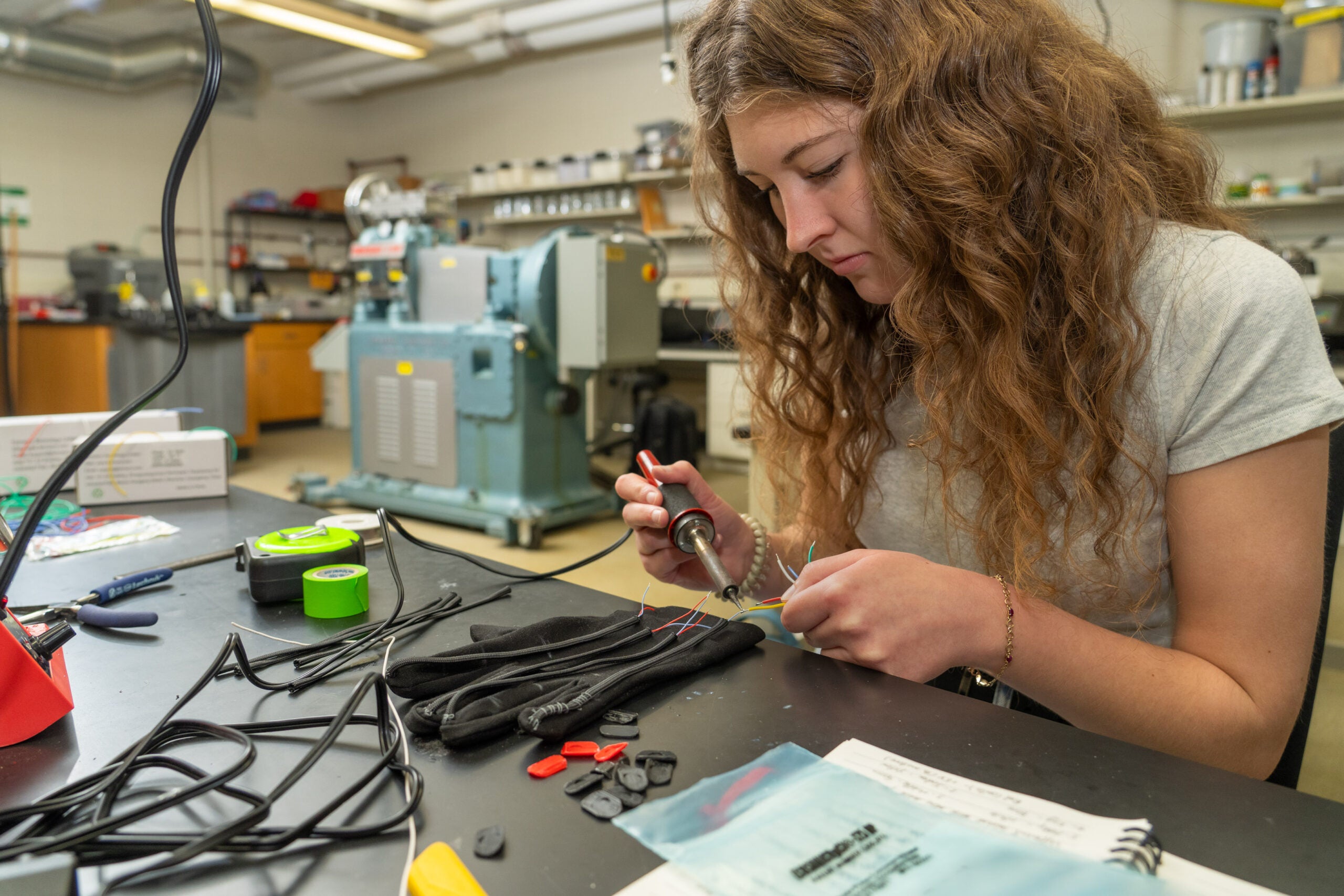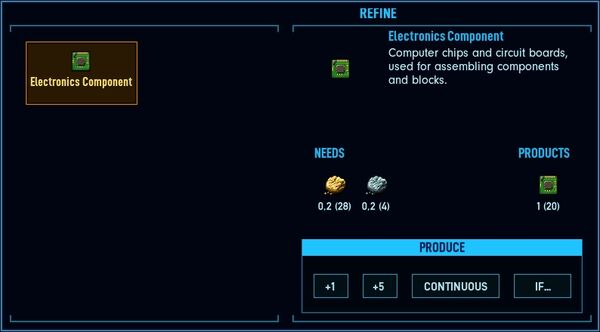Are you struggling to get the best performance from your electronic components? Knowing how to refine them can make a huge difference in your projects.
Imagine boosting reliability, improving efficiency, and extending the lifespan of your devices—all by mastering a few simple techniques. You’ll discover clear, practical steps to refine your electronic components with ease. Stick with me, and you’ll unlock the secrets that can elevate your work to the next level.
Ready to transform your electronics? Let’s dive in.

Credit: www.wpr.org
Choosing Quality Raw Materials
Choosing high-quality raw materials ensures electronic components perform well and last longer. Pure and reliable materials reduce errors during refining and improve overall product quality. Careful selection helps create stable and efficient electronic parts.
Choosing quality raw materials is vital in refining electronic components. The right materials ensure longevity and efficiency. Start by understanding the key factors in material selection. A keen eye on quality can save time and costs.Material Selection Criteria
Selecting the right material requires careful consideration. Look for materials with high conductivity and thermal stability. Check for resistance to corrosion and wear. Ensure compatibility with existing components. Environmental impact is also crucial. Opt for sustainable and recyclable materials. Consider the cost-effectiveness of each material. Balancing quality and budget is key.Supplier Evaluation Techniques
Evaluate suppliers to ensure quality raw materials. Begin with a background check. Review their history and reputation. Ask for certifications and quality standards. Request samples to test material quality. Assess their delivery timelines and reliability. Check customer reviews and feedback. Effective communication with suppliers is essential. Build strong relationships for consistent quality.Precision Cleaning Methods
Precision cleaning methods are vital for refining electronic components. These techniques remove dirt, oils, and residues that can affect performance. Clean components ensure better conductivity and longer device life.
Using precise cleaning processes helps avoid damage to delicate parts. It also improves reliability and reduces failure rates during use.
Ultrasonic Cleaning Benefits
Ultrasonic cleaning uses high-frequency sound waves to clean. The waves create tiny bubbles that remove dirt from hard-to-reach areas. This method is gentle yet effective for sensitive components.
- Removes contaminants without harsh scrubbing
- Reaches small crevices and complex shapes
- Speeds up the cleaning process
- Reduces risk of damage to delicate parts
- Uses water or mild cleaning solutions
Solvent Cleaning Options
Solvent cleaning dissolves oils and residues on components. Different solvents suit various types of contamination and materials.
- Isopropyl alcohol works well for light grease
- Acetone removes tough adhesives and flux
- Specialty solvents target specific contaminants
- Fast drying and leaves minimal residue
- Requires proper ventilation and safety measures
Advanced Machining Techniques
Advanced machining techniques improve precision and efficiency in refining electronic components. These methods allow manufacturers to create intricate parts with tight tolerances. The use of modern tools reduces waste and speeds up production. Such techniques are crucial for meeting the demands of today’s electronics industry.
Laser Cutting Advantages
Laser cutting uses a focused beam to slice materials with high accuracy. It creates clean edges without physical contact. This reduces the risk of damage to delicate components. The method works well on metals, plastics, and thin circuit boards. Laser cutting also supports rapid prototyping and small batch production.
- Produces precise and smooth cuts
- Minimal material waste
- Can cut complex shapes and fine details
- Non-contact process reduces mechanical stress
- Faster turnaround time compared to traditional cutting
Cnc Milling Applications
CNC milling uses computer-controlled tools to carve components from solid blocks. It offers flexibility in shaping parts with three-dimensional features. This technique is ideal for creating custom housings and connectors. CNC milling handles various materials, including metals and plastics. It ensures repeatable accuracy across multiple units.
- Enables high precision and complex geometries
- Suitable for both prototypes and production runs
- Improves surface finish and dimensional accuracy
- Allows easy design adjustments through software
- Supports a wide range of material hardness

Credit: www.youtube.com
Surface Treatment Processes
Surface treatment processes improve electronic components by enhancing their strength and lifespan. These treatments protect parts from wear, corrosion, and electrical failure. They also boost performance in harsh environments. Choosing the right surface treatment ensures components work reliably over time.
Electroplating For Durability
Electroplating coats electronic parts with a thin metal layer. This layer strengthens the surface and resists scratches. Common metals used include nickel, gold, and silver. Electroplating also improves electrical conductivity and solderability. This process extends the component’s life in demanding conditions.
- Enhances surface hardness
- Prevents oxidation and corrosion
- Improves electrical contact
Anodizing For Corrosion Resistance
Anodizing creates a protective oxide layer on metal surfaces. It is widely used on aluminum components. This layer prevents rust and surface damage from moisture. Anodizing also allows color customization for identification or branding. It keeps parts stable in humid or acidic environments.
- Increases resistance to corrosion
- Improves surface wear resistance
- Offers color options without paint
Quality Control Measures
Quality control measures are crucial in refining electronic components to ensure reliability and performance. Without strict inspection and testing, even a small defect can cause significant issues in your final product. Implementing effective quality control helps catch problems early and saves time and money in the long run.
Microscopic Inspection Tools
Microscopic inspection tools allow you to see tiny defects invisible to the naked eye. These tools magnify solder joints, circuit paths, and component surfaces to spot cracks, contamination, or misalignments.
Using a digital microscope, you can capture detailed images and analyze them for irregularities. This helps you verify the quality of connections and component placement before moving forward.
Have you ever noticed how a small crack under a microscope explained a sudden device failure? Such insights prove how vital microscopic inspection is for your quality control process.
Automated Testing Systems
Automated testing systems run precise and repeatable tests on electronic components quickly. They measure electrical properties, functionality, and response times to confirm components meet specifications.
These systems reduce human error and speed up testing cycles, allowing you to handle larger volumes with consistent quality. Integration with software also tracks results and flags components that fall outside acceptable limits.
Imagine catching a faulty batch early because your automated tests detected an unusual voltage drop. This proactive approach can prevent defective products from reaching your customers.

Credit: spacehaven.fandom.com
Handling And Storage Tips
Handling and storing electronic components properly is crucial to maintain their performance and longevity. Even small mistakes can cause damage that’s hard to detect but costly to fix. Paying attention to how you treat these sensitive parts can save you time, money, and frustration.
Anti-static Precautions
Static electricity can silently destroy electronic components before you even use them. Always ground yourself with an anti-static wrist strap when handling parts. If you don’t have one, touching a grounded metal object frequently helps reduce static build-up.
Keep components in anti-static bags or containers. These materials prevent static charges from building up and protect delicate circuits. Avoid working on carpeted floors or in dry environments where static is more likely to occur.
Optimal Storage Conditions
Temperature and humidity play a big role in component reliability. Store parts in a cool, dry place away from direct sunlight. Excessive heat can warp or degrade materials, while moisture leads to corrosion and short circuits.
Use sealed containers or desiccant packs to control humidity levels inside storage boxes. Label your parts clearly and organize them by type or project to avoid unnecessary handling. Have you noticed how much easier it is to find parts when everything is tidy and well-labeled?
Frequently Asked Questions
What Are The Key Steps To Refine Electronic Components?
Refining electronic components involves cleaning, testing, and repairing. First, remove contaminants with solvents. Then, test functionality using specialized equipment. Lastly, replace damaged parts to restore performance and reliability.
How Does Refining Improve Electronic Component Quality?
Refining eliminates defects and contaminants. It enhances conductivity and performance. This process reduces failure rates, increasing component lifespan and reliability in electronic devices.
Which Tools Are Essential For Refining Components?
Essential tools include ultrasonic cleaners, multimeters, soldering irons, and magnifiers. These help clean, test, and repair components effectively and safely.
Can Refining Electronic Components Reduce E-waste?
Yes, refining extends component life, reducing the need for replacements. This lowers electronic waste and supports sustainable recycling practices.
Conclusion
Refining electronic components takes careful steps and attention. Clean parts improve device performance and lifespan. Use proper tools and follow safety rules. Regular checks help catch problems early. Stay patient and work with focus. Small efforts lead to better results.
Keep learning to improve your skills. Quality matters in every detail. This guide helps you refine components well.

Leave a Reply